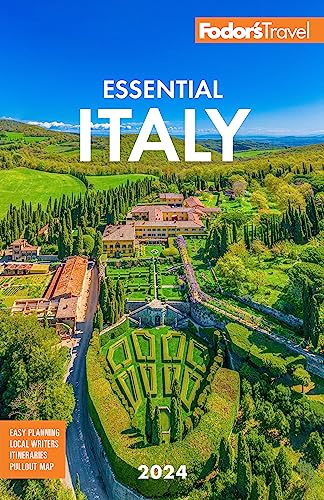Eating and Drinking Well in Tuscany
The influence of the ancient Etruscans—who favored the use of fresh herbs—is still felt in Tuscan cuisine three millennia later. Simple and earthy, Tuscan food celebrates the seasons with fresh vegetable dishes, wonderful bread-based soups, and meats perfumed with sage, rosemary, and thyme.
Throughout Tuscany there are excellent upscale restaurants that serve elaborate dishes, but to get a real taste of the flavors of the region, head for the family-run trattorias found in every town. The service and setting are often basic, but the food can be memorable.
Few places serve lighter fare at midday, so expect substantial meals at lunch and dinner, especially in out-of-the-way towns. Dining hours are fairly standard: lunch between 12:30 and 2, dinner between 7:30 and 10.
Hold the Salt
Tuscan bread is famous for what it's missing: salt. That's because it's intended to pick up seasoning from the food it accompanies and not eaten alone. That doesn't mean Tuscans don't like to start a meal with bread, but usually it's prepared in some way. It can be grilled and drizzled with olive oil (fettunta), covered with chicken liver spread (crostino nero), or toasted, rubbed with garlic, and topped with tomatoes (bruschetta).
Affettati Misti
The name, roughly translated, means "mixed cold cuts," and it's something Tuscans do exceptionally well. A platter of cured meats, served as an antipasto, is sure to include prosciutto crudo (ham, cut paper-thin) and salame (dry sausage, prepared in dozens of ways—some spicy, some sweet). The most distinctly Tuscan affettati are made from cinta senese (a once nearly extinct pig found only in the heart of the region) and cinghiale (wild boar, which roam all over central Italy). You can eat these delicious slices unadorned or layered on a piece of bread.
Pasta
Restaurants throughout Tuscany serve dishes similar to those in Florence, but they also have their own local specialties. Many recipes are from the nonna (grandmother) of the restaurant's owner, handed down over time but never written down.
Look in particular for pasta creations made with pici (a long, thick, hand-rolled spaghetti). Pappardelle (a long, ribbonlike pasta noodle) is frequently paired with sauces made with game, such as lepre (hare) or cinghiale. In the northwest, a specialty of Lucca is tordelli di carne al ragù (meat-stuffed pasta with a meat sauce).
Meat
Bistecca fiorentina (a thick T-bone steak, grilled rare) is the classic meat dish of Tuscany, but there are other specialties as well. Many menus will include tagliata di manzo (thinly sliced, roasted beef, drizzled with olive oil), arista di maiale (roast pork with sage and rosemary), and salsiccia e fagioli (pork sausage and beans). In the southern part of the region, don't be surprised to find piccione (pigeon), which can be roasted, stuffed, or baked.
Wine
Grape cultivation here also dates from Etruscan times, and vineyards are abundant, particularly in Chianti. The resulting medium-body red wine is a staple on most tables; however, you can select from a multitude of other varieties, including such reds as Brunello di Montalcino and Vino Nobile di Montepulciano and such whites as vermentino and vernaccia.
Super Tuscans (a fanciful name given to a group of wines by American journalists) now command attention as some of the best produced in Italy; they have great depth and complexity. The dessert wine vin santo is made throughout the region, and is often sipped with biscotti (twice-baked almond cookies), perfect for dunking.




